|
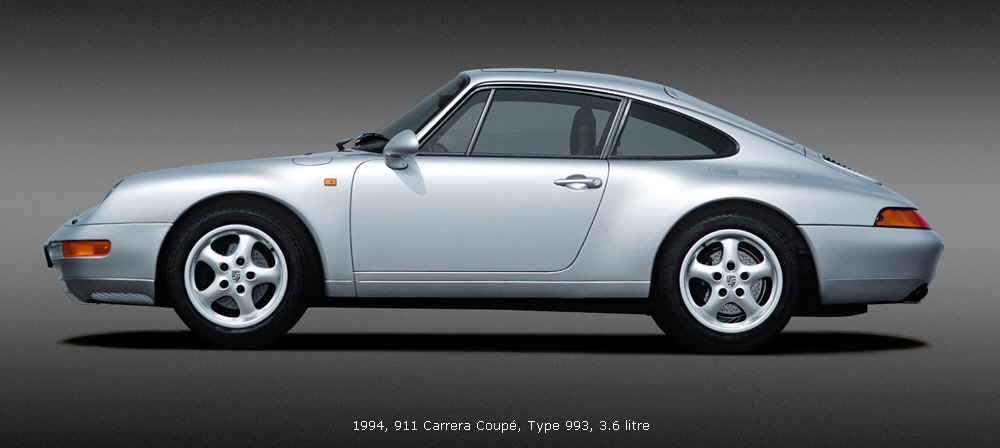
Porsche 911 : Type 993 (1993-1998)
The last air-cooled 911 - This 911, internally known as the 993, remains to this day many Porsche drivers' great love. That is partly due to its
strikingly beautiful lines. The integrated bumpers underline the harmonious overall impression. The front section is flatter than on the previous models,
made possible by the switch from round to poly-ellipsoid headlights. The 993 was also regarded as particularly well developed and reliable – and as
agile too, for it was the first 911 to be given a redesigned aluminium chassis. For the first time the turbo version was equipped with a twin-turbo
engine, which in 1995 ranked as the world's lowest emission production car engine. Another innovation of the all-wheel drive turbo version was the
hollow spoke alloy wheels, used here in car manufacturing for the first time. For fans of really fast sports cars Porsche offered the 911 GT2.
Meanwhile a new feature of the 911 Targa was the electric sunroof that slid back behind the rear window. However, the most important reason for
dedicated Porsche enthusiasts' ongoing appreciation of the 993 to this day is that this version, built from 1993 to 1998, was the last 911 with an air-cooled engine.
- Models.............993 Series (1994–1997), 993 Turbo (1995–1997)

1993, 911 Turbo, 3.6 litre, Flatnose
1993: LSA aluminium chassis
The new chassis designed in accordance with the "LSA" concept (Light, Stable, Agile) in the 993 series finally put an end to the capriciousness of
the rear engine 911. It mainly affected the rear axle that was based on a multi-link suspension, tested in motor races, which facilitated excellent
driving dynamics. The axle kinematics are designed to ensure that the vehicle's suspension compresses significantly less when accelerating and
driving round bends. This stabilises the driving characteristics in general. Furthermore, lightweight spring struts with aluminium dampers improve
agility. The principle of systematic lightweight design was also applied in order to keep the vehicle gross weight and the weight of the unsprung
masses low. The result of all these measures was that the chassis made it possible to change lanes quickly and safely, even at high speeds. And rolling noises and vibrations were also reduced.
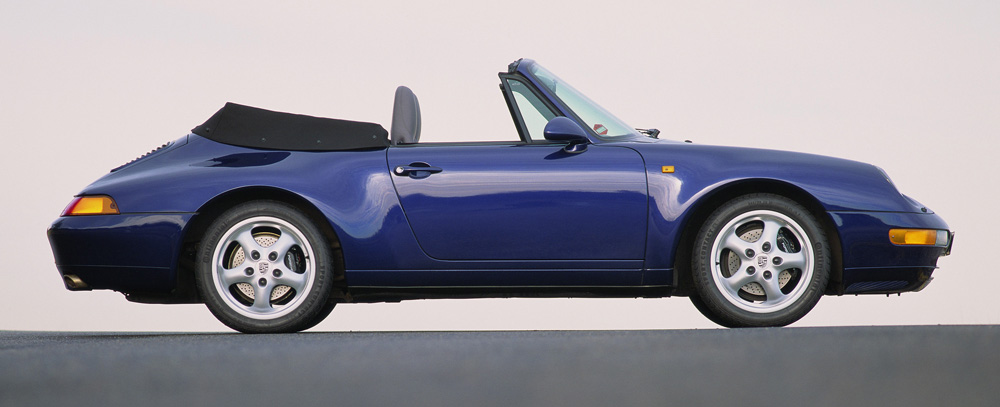
1994, 911 Carrera Cabriolet, Type 993, 3.6 litre
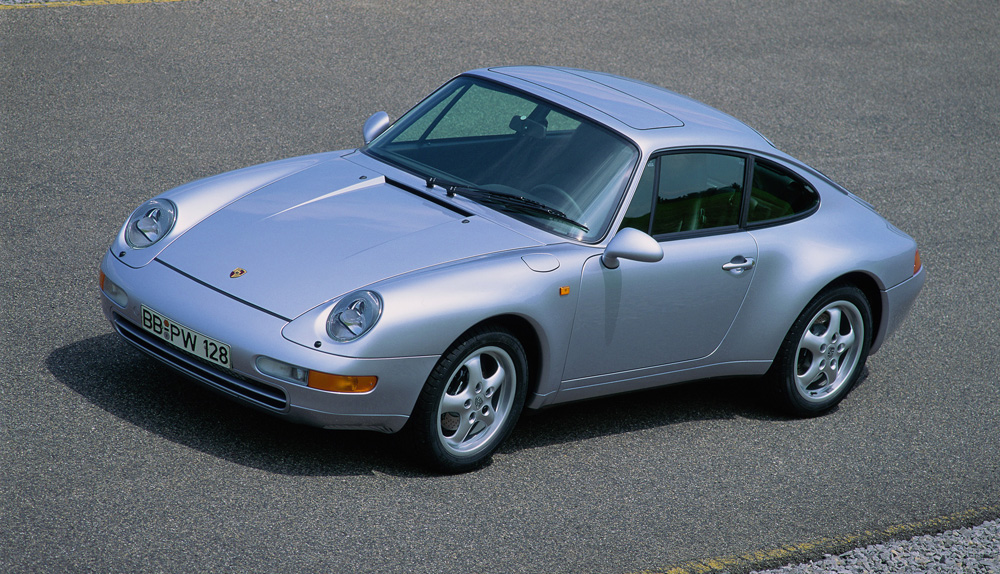
1994, 911 Carrera Coupé, Type 993, 3.6 litre

1994, 911 Carrrea Coupé, Type 993, 3.6 litre
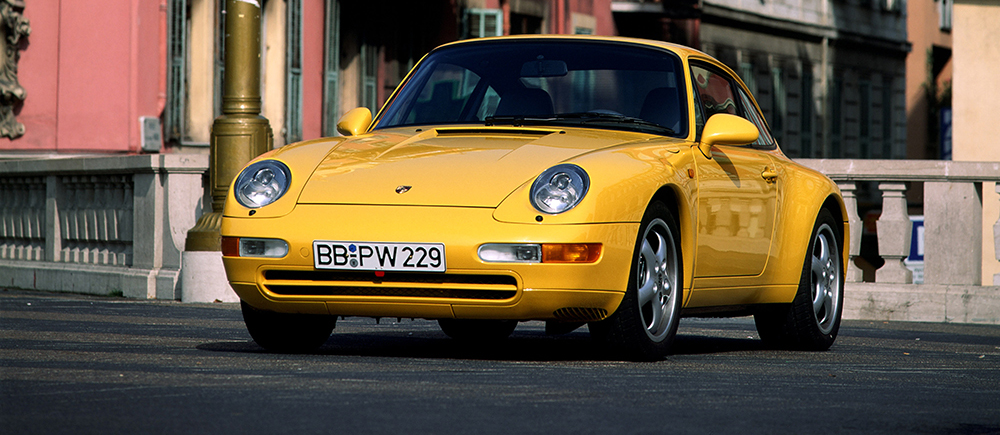
1994, 911 Carrera Coupé, 3.6 litre
1994, represented the next evolutionary stage of the Porsche all-wheel drive. For example, it was fitted with an optimally adapted, very light Visco multi-plate clutch as the axle clutch.
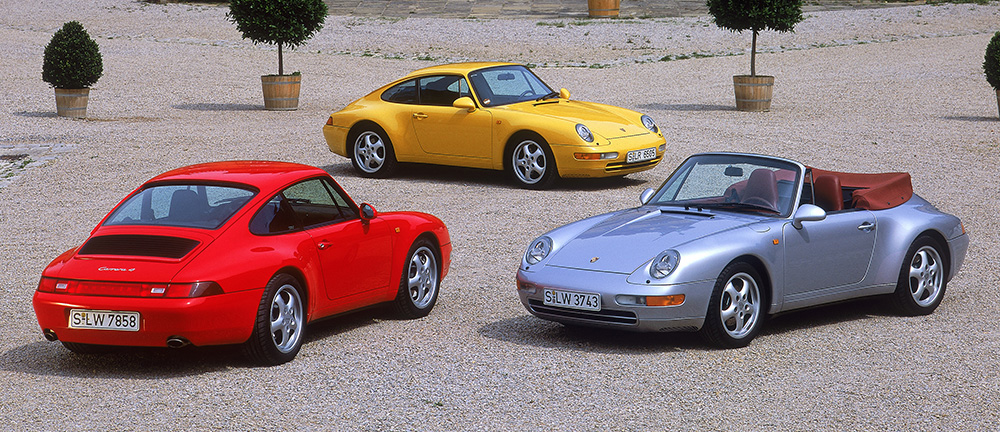
1995, 911 Carrera 4 Coupé, 911 Carrera Coupé, 911
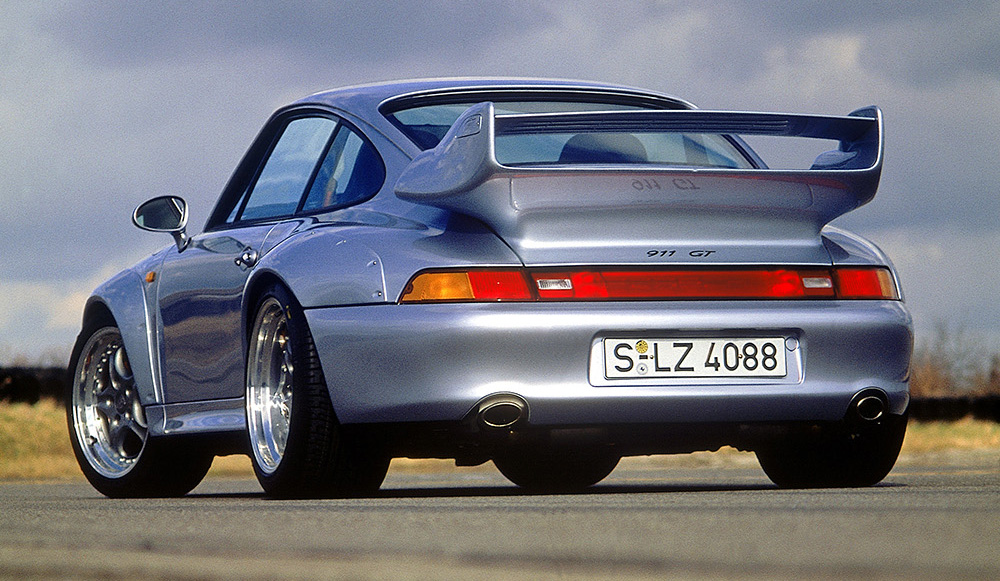
1995, Porsche 911 GT2
1995: OBD II emissions control system
Another technical highlight of the six-cylinder car was the new OBD (onboard diagnostics) II emissions monitoring system which was used for the first
time by a series production manufacturer. It facilitated early detection of faults or defects in the exhaust and fuel system. The extensive measures
for reducing emissions were very effective on the 911 Turbo. To the great surprise of the experts, the turbo engine turned out to be the lowest
emission series production engine in the world. The supercharged 993 was also the first bi-turbo with air mass control in automotive history. The OBD
continually monitored the operation of the entire exhaust system with catalytic converters and oxygen sensors, the functioning of the tank
ventilation system with activated charcoal filters, the secondary air system and the fuel system. Misfiring was also recorded. At the time it was
launched, OBD II was already mandatory in the USA and other markets soon followed. OBD required a great deal of development work and an extremely complex engine management system.
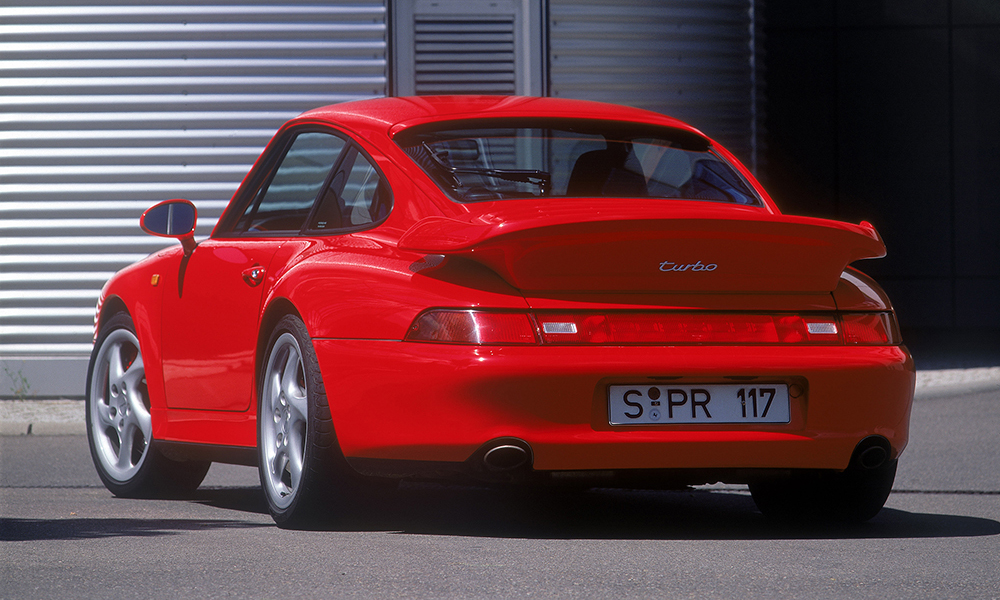
1996, 911 Turbo, 3.6 litre
1995: Bi-turbocharging
The 993 series 911 Turbo, presented in 1995, was given a 3.6-litre engine fitted with two small turbochargers, whose performance curve was not
dissimilar to a high-displacement naturally aspirated engine. From as low as 2,000 rpm, the engine generated plenty of thrust which changed into
impressive, rousing velocity from 3,500 rpm and pressed the occupants into their seats. In addition to the output that increased to 300 kW (408 hp)
and the rise in the maximum torque to 540 Newton metres, the Weissach engineers also aimed to reduce the engine's acceleration turbo lag to a
previously unknown minimum. They achieved this by using two small turbochargers instead of one large one, whereby the low moment of inertia of
the smaller blades had the most significant effect. The two regulated turbines with integrated bypass flap generated a boost pressure of 0.8 bar. The
impressive increase in output and engine speed was also due to optimisation of the charge cycle, the high level of efficiency of the two charge air
coolers and the knock control system that facilitated running the engine at optimum efficiency
911 classis | G series | Type 964 | Type 993 | Type 996 | Type 997 | Type 991
|








